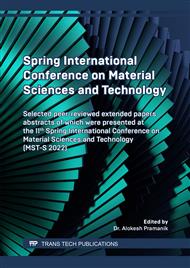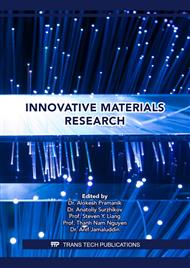p.3
p.9
p.15
p.21
p.27
p.39
p.47
p.53
Study on the Properties of Chemical Foaming Injection Molded Polyolefin/Chitosan Composites
Abstract:
Chitosan is a biodegradable material with good biocompatibility. It can be used in medicine, foodstuff, the chemical industry and heavy metal adsorption. In this study, an exothermic foaming agent (Azodicarbonamide) injection molded was added to polypropylene (PP), maleic anhydride (MA) grafted PP (PPgMA) and Chitosan composites. MA served as a compatibilizer due to the poor bonding between PP and chitosan. This study investigated the effects of the modifier and chitosan loading on the tensile strength, thermal properties and morphology in chemical foam injection-molded PP and PPgMA composites. The results showed that the tensile strength decreased with the addition of chitosan, but Young’s modulus increased with the added chitosan loading. The enhancement was significant for foam injection molding. The cell size decreased and the cell density increased with the addition of chitosan for the PP/PPgMA composites. The thermogravimetric analysis (TGA) results showed that the thermal degradation could be decreased with the addition of chitosan in both the PP and PPgMA composites. The use of foamed chitosan composites will be further investigated in the removal of heavy metal in waste water.
Info:
Periodical:
Pages:
21-26
Citation:
Online since:
June 2022
Authors:
Keywords:
Price:
Сopyright:
© 2022 Trans Tech Publications Ltd. All Rights Reserved
Share:
Citation:



